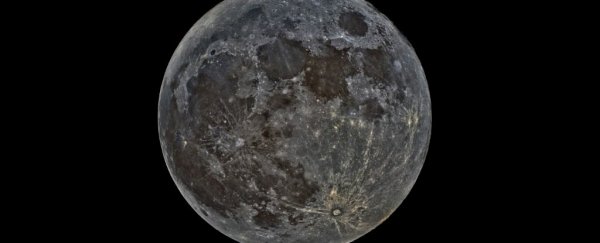A rare 'black moon' will rise this Friday night, turning the sky dark as the Western Hemisphere experiences its second new moon of the month.
Those on the other side of the world will have to wait until next month for the same event to occur, but it'll be worth it - their eerie black moon is set to coincide with Halloween.
If you're having trouble keeping up with all the different types of 'moons' we've got now - with blood moons, blue moons, and supermoons clogging up your sky-watching calendar - the black moon is a fairly new addition, and experts are still trying to nail down its definition.
Some say a black moon occurs about once every 19 years, when the month of February skips a full moon.
Others say it describes a month that skips a new moon - the first phase of the lunar cycle, when the Moon and the Sun have the same elliptical longitude.
But the most common definition for a black moon is that it's the second new moon in a calendar month, which means this Friday's event is the second time in September that the Moon will be entirely invisible in the night sky - for those in the Western Hemisphere, at least.
If you're familiar with your lunar cycles, you'll know that a full moon occurs when the Earth-facing side of the Moon is completely illuminated by the Sun, thanks to its orbital position at a certain time of the month.
This means to viewers in the right hemisphere, it will look incredibly bright in the night sky.
A new moon, on the other hand, occurs when the side of the Moon that's lit up by the Sun is facing away from Earth, which renders it virtually invisible to the naked eye.
As Joe Rao explains for Space.com, there's typically one full moon and one new moon each month, but sometimes the lunar cycle doesn't match up, and you can get several or none of each in a certain month.
"A second full moon in a single calendar month is sometimes called a blue moon," says Rao. "A black moon is supposedly the flip side of a blue moon: the second new moon in a single calendar month."
The upcoming black moon will occur at 8:11pm Eastern Time (5:11pm Pacific Time) on Friday, September 30 for those in the Western Hemisphere, which covers North and South America, and certain western portions of Europe and Africa.
This particular black moon follows an even rarer event: for some viewers in the Western Hemisphere, the first new moon of this month was a 'ring of fire' solar eclipse, because the new moon also happened to pass directly between Earth and the Sun.
For the Eastern Hemisphere (Europe, Africa, Asia, Australia), the black moon will occur next month, with the first new moon expected for October 1, and the second new moon - the black one - to occur on either October 30 or 31, depending on where you live.
So, what will the black moon look like?
Like all new moons, without anything to illuminate it, there will be nothing to see - no moon in the sky, which is actually pretty cool. A couple of days later, you'll start to see a silver sliver, as the crescent moon increases in size.
If you've got the right equipment and you're up for a challenge, you could even try to beat the world record for the youngest moon ever photographed - set in 2013 by French photographer Thierry Legault, who managed to capture this shot, when the Sun and Moon were separated just 4.4 degrees.
Here's NASA with a Moon's-eye view of the lunar cycles:
